Newborn photography is a type of portrait photography focused on capturing newborn babies. Learn the best tips for better images.
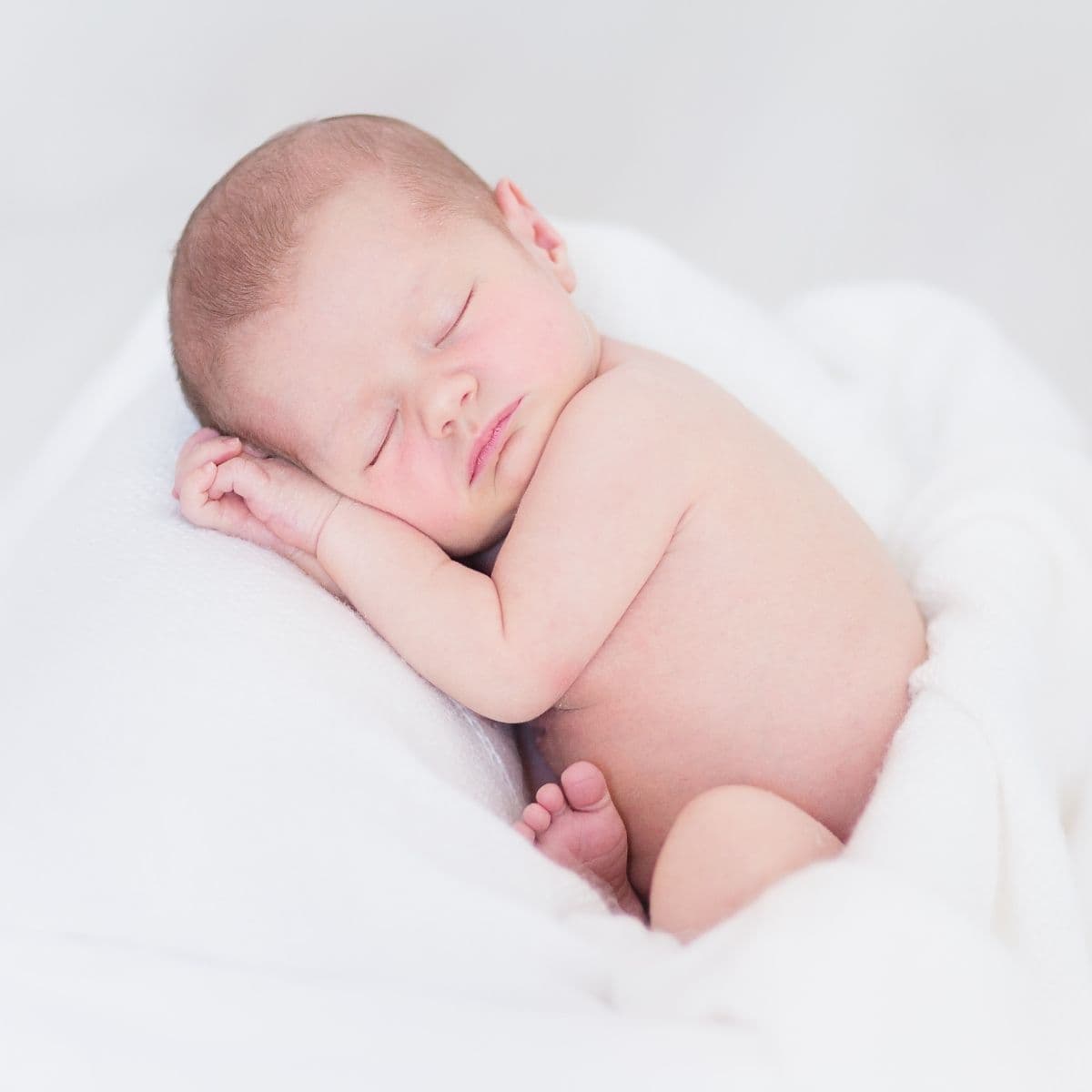
Newborn photography is a genre of portrait photography all about newborn babies. Their cheeks, little toes, wrinkly hands, and tiny selves fill hearts with joy.
Related: 12 best Christmas card photo ideas
New parents cherish the first weeks because children grow quickly. The early days are precious but fleeting.
Soon, they’ll be toddlers and then teenagers. That’s why parents get photos taken of their newborn within the first several weeks.
By taking unforgettable and genuine images, you can provide families with memorable moments and raw emotions.
When you’re capturing photos of a newborn, safety is key.
Related: Loop lighting guide for portrait photography
You must provide a safe and loving space. The parents should feel comfortable and happy.
The following is your ultimate guide to taking the best newborn photos and leaving your clients happy.
1. Take newborn photos within two weeks after birth
Timing is the key to a successful newborn photoshoot. Ideally, newborn photos should be taken between five to fourteen days after birth.
During this time frame, the baby is sleepy, easier to pose, has an adorable demeanor, most likely won’t have baby acne, and the umbilical cord has fallen off.
It’s best to avoid taking newborn photos earlier than five days because they may cry a lot and are getting used to feeding times.
After fourteen days, the baby will likely be awake during the session, and they aren’t as fresh.
If two weeks have gone by after birth, you can still capture newborn photos. Five to fourteen days is a best practice.
2. Be on the same page as your clients
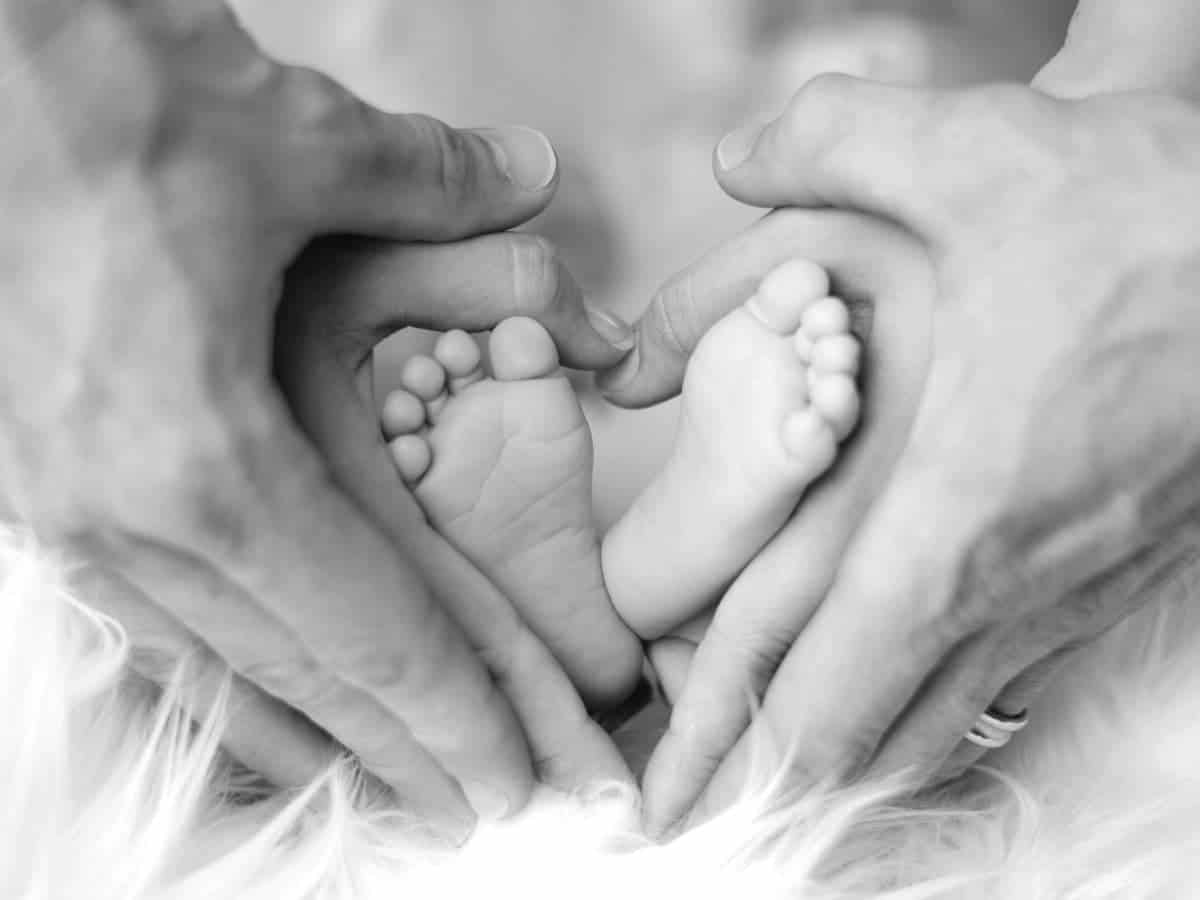
As the photographer, it’s your job to ensure that your expected outcome of the newborn photo session is the same as your clients.
Impeccable communication is required from beginning to end. From the moment a potential client inquires about a newborn photoshoot, you must clearly communicate and ensure you’re on the same page.
Take the time to understand what type of images they want and share your approach and process.
Some parents prefer lifestyle shots, while others want their baby posed. Understand your clients’ expectations so you can capture newborn photos they’ll love and cherish.
If they want to move forward, make sure you have a solid contract. While you don’t want anything to go wrong, things can happen, and a good contract will protect you and your business.
If you don’t have a contract, get one from The Contract Shop.
As a part of being on the same page, talk about editing. Typically, newborn photos are edited to be light and airy.
However, some parents prefer a natural look. So, talk to the parents to see what they’d like and if you can do it.
3. Prepare your gear and props
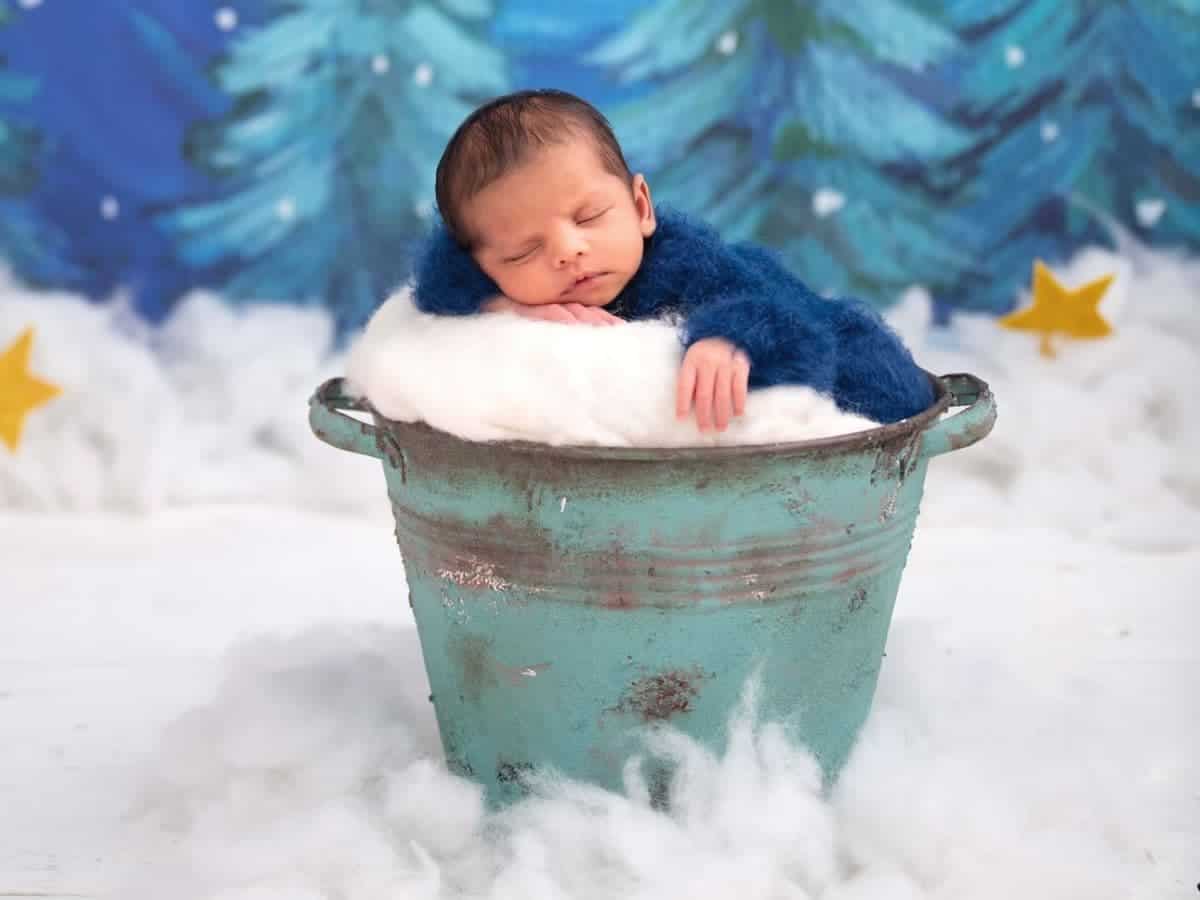
Adorable newborn photography requires preparation. So, you need to make sure you have your photography gear and props.
For your gear, make sure your camera’s battery is charged, your memory card, camera body, lenses, and the rest of your equipment are functioning.
Additionally, bring extra batteries and memory cards, as you may need them. If you have another camera body, pack it in the event that your main camera malfunctions.
Aside from your gear, props will ensure you capture the best newborn photos.
Blankets, wraps, heat, baskets, toys, and something for sounds are several common items for newborn sessions. Safety is key. So, don’t bring sharp or hard objects that can injure the baby.
Your clients may also have things that they want to include in the photos. So, it’s best to coordinate with them.
4. Create a comfortable environment

Preferably, the session should be done in the client’s home. It can help the baby be calm and comfortable. It’s likely the only place they’ve been since birth.
Whether you’re doing the session in a studio or your client’s home, the environment needs to be comfortable for the baby.
Newborns don’t like the cold. So, keep the shooting area warm by using a small space heater or increasing the temperature.
Keep it around 75 degrees Fahrenheit, and make sure the area is warm before bringing in the baby.
During the session, you can turn down the temperature when the baby is wrapped to prevent overheating.
If you have cold hands, consider wearing gloves or use hand warmers before touching the baby.
Another way to create a comfortable environment is to provide shushing sounds or white noise.
By providing noises soothing to the baby, you can capture incredible images without a fuss.
Remember, an uncomfortable baby leads to fussiness, crying, and difficulties.
So, make the baby’s comfort your priority. Everyone will be happy, and you’ll take beautiful photos.
5. Keep the newborn safe
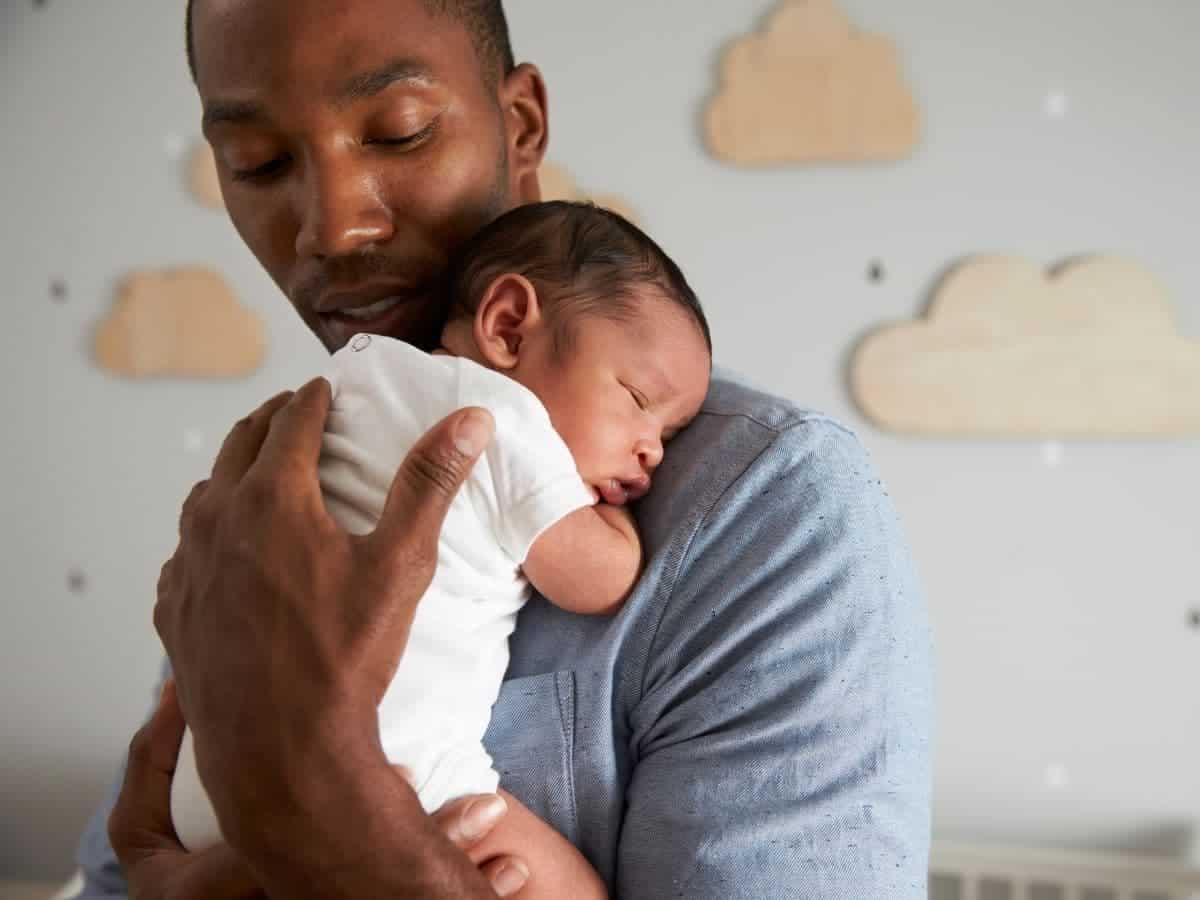
The level of trust that parents put in you to photograph and handle their newborn shouldn’t be taken lightly.
Safety is of the utmost importance. Learn how to properly handle, soothe, support, and pose a baby.
Also, understand the signs of distress. A red face, sweat, and clammy skin is a sign of overheating. Purple hands or feet mean the baby’s circulation is being cut.
No image is worth risking a baby’s safety.
So, avoid hard and sharp objects, high places, unsteady surfaces, or any other way a baby can get hurt.
Even your camera needs to be secured by a neck strap or wrist strap. You don’t want to risk it falling on or hitting the baby.
Most of the creative newborn photos that show a baby in a way that could be dangerous are likely composites.
The photographer takes a photo of the baby being held with the prop and another of the prop by itself and combines it in Photoshop.
Additionally, there are poses that newborns can’t naturally do. Instead, you can take several images and combine them in Photoshop, as well.
Lastly, consider taking a baby safety and CPR class to professionally learn the skills.
6. Master the wrap
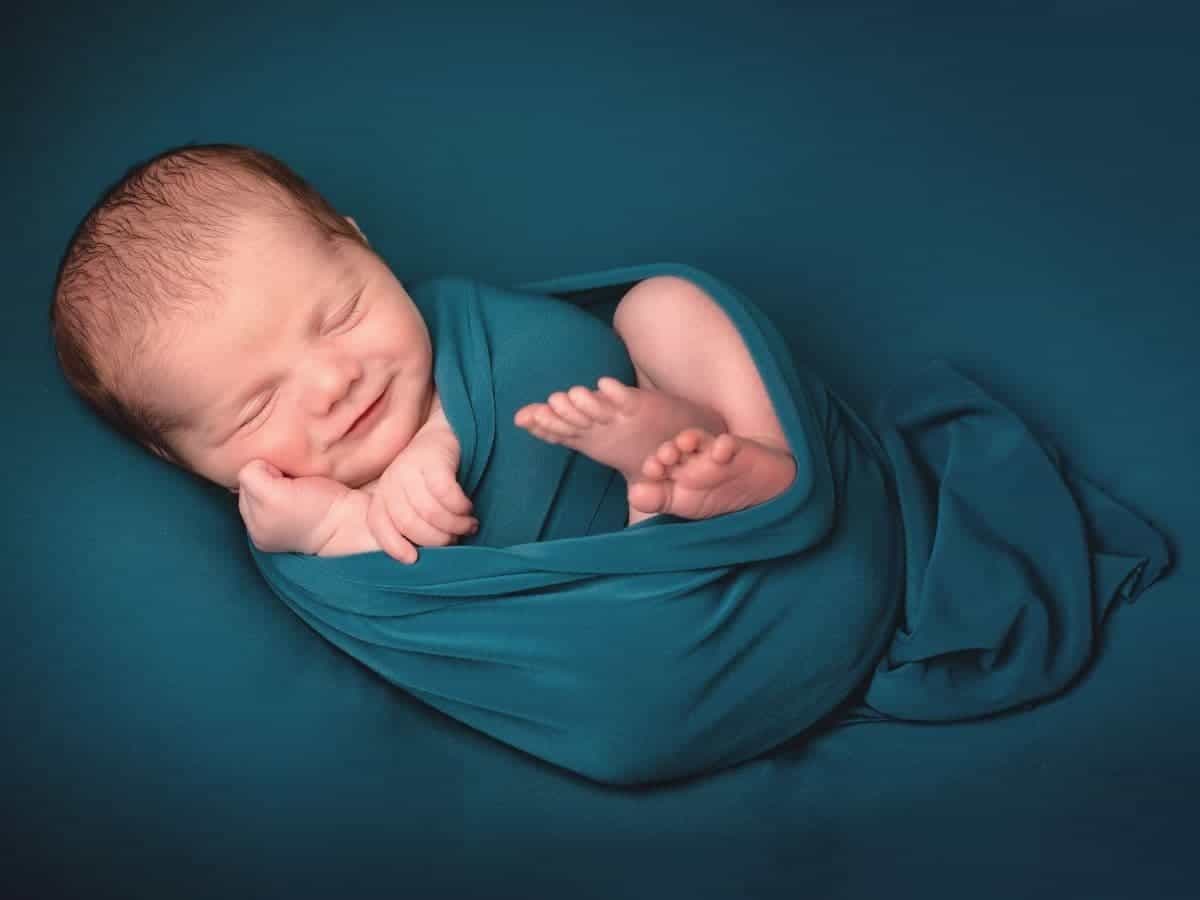
When you think of newborn photography, one of the first images that may come to mind is a baby wrapped in a blanket.
A tight swaddle is a classic look, and to do it, take the following steps:
- Lay a blanket flat with the corners pointing up, not the long sides.
- Fold the top corner about a third of the way down.
- Place the baby face-up with their head over the folded part.
- Pull the right corner over the baby and tuck it under their back.
- Pull the bottom corner over their feet.
- Pull the left corner across and tuck it underneath.
- Make sure the wrap isn’t too tight. The baby should still be able to move around.
Aside from the traditional swaddle, there are other wrapping techniques that you can try. Knowing how to wrap a baby well is a big part of newborn photography.
Additionally, the blanket material should be breathable. Natural materials such as cotton, linen, and muslin are excellent options.
Experiment with different colors and textures during your session.
You can even wrap the baby with two blankets instead of one to combine different colors. Two wraps are also great for securely wrapping larger and stronger babies.
7. Lighting is everything
Natural light creates some of the best newborn photos. So, turn off all other lights and lamps unless they’re a part of the image.
In a home, window light is ideal. However, be mindful of the direction of light.
Instead of facing the window and capturing flat light, change the angle and capture shadows.
Light coming from the side or diagonally will fill the baby’s face with light and create shadows, adding depth to the image.
One of the most common setups is to place a beanbag about three feet from a window. Then, you’d capture the photos from directly above the newborn.
If the shadows are too harsh, you can use a reflector to bounce light back and fill the shadows. It’ll give you beautiful soft lighting.
8. Use a smaller aperture
Wide apertures are excellent for bokeh and blur. However, some baby positions may lead to parts of their body being blurry due to a shallow depth of field.
So, keep the aperture at f/3.5 or smaller to have a deeper depth of field, ensuring every part of the baby stays in focus.
Like other types of portrait photography, always focus on your subject’s eyes.
9. Capture expressions and moments
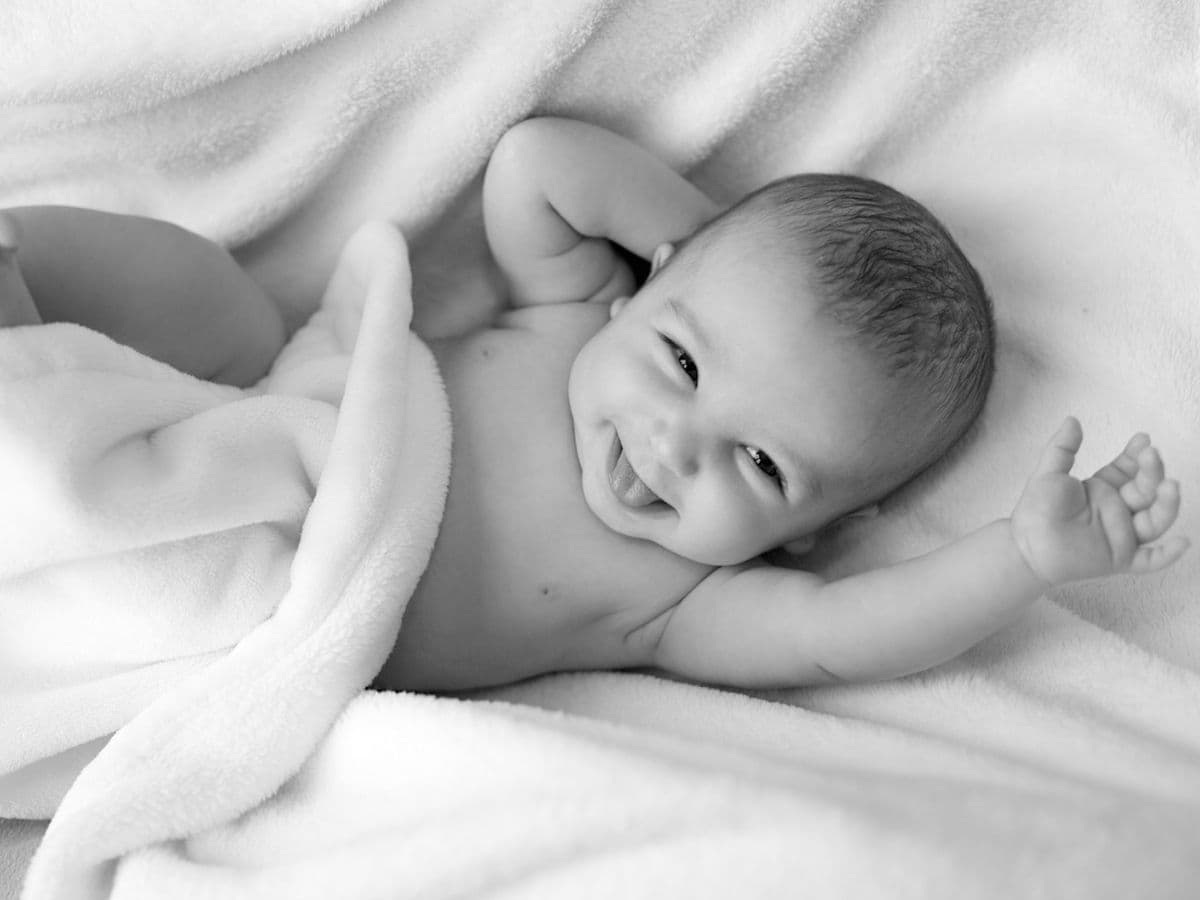
Yes, capture the basic poses, such as the back pose, side pose, and tummy pose.
While you capture the posed images, be sure to capture moments and expressions.
Babies will move, stretch, make facial expressions, and yawn. Those are sweet moments that’ll be cherished for a lifetime if you capture them.
Don’t worry about perfection. Genuine moments are better.
Newborns sleep a lot and they will for most of the session. It’s better that way because an awake baby leads to crying, blurry, or cross-eyed images.
10. Get close for the details
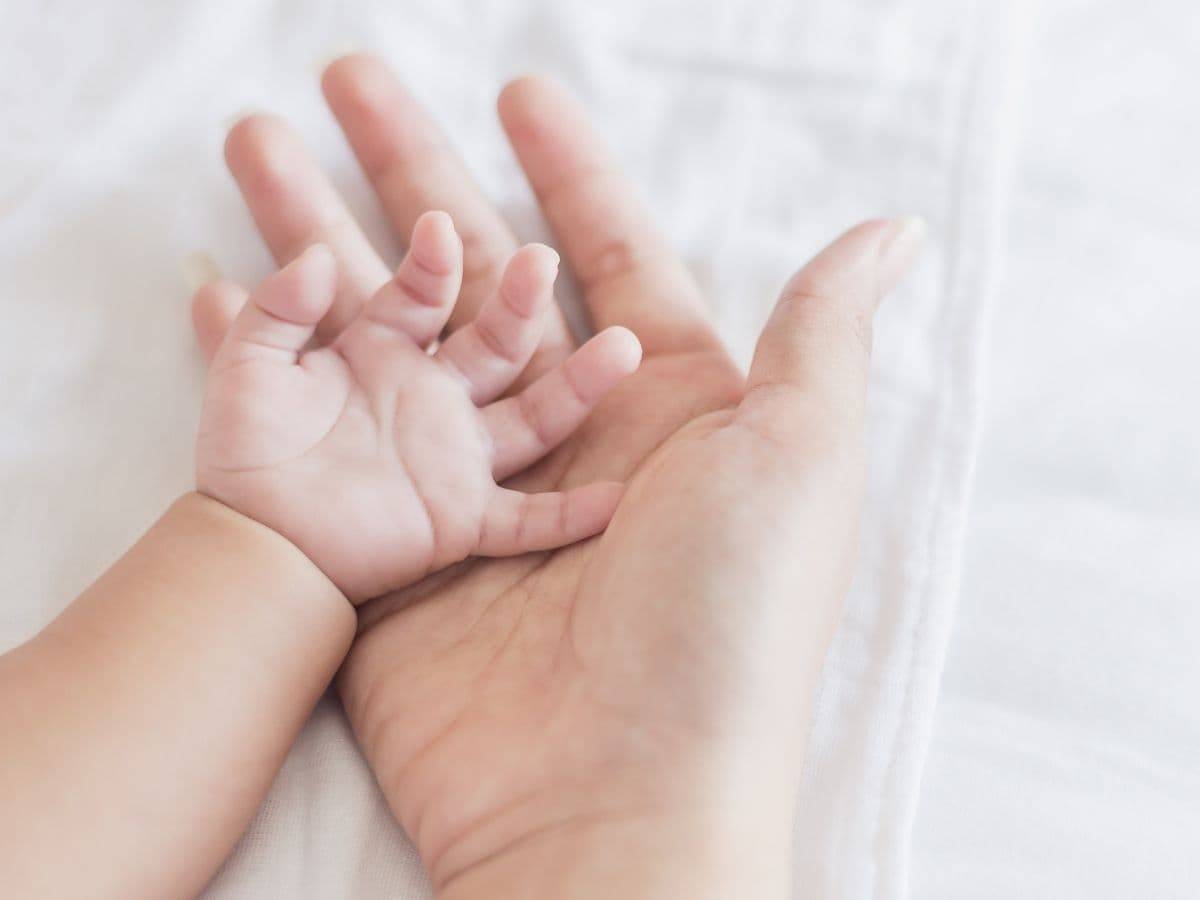
Get close or use a macro or longer lens to document the small and sweet details. Capture the baby’s nose, lips, ears, chin, belly button, hands, and feet.
All of the tiny details are important because a parent will never forget them.
With the detail shots, you can use a wide aperture to capture a shallow depth of field.
There are so many small details that you can capture. Plus, they make for adorable photo albums.
11. Try different angles and perspectives
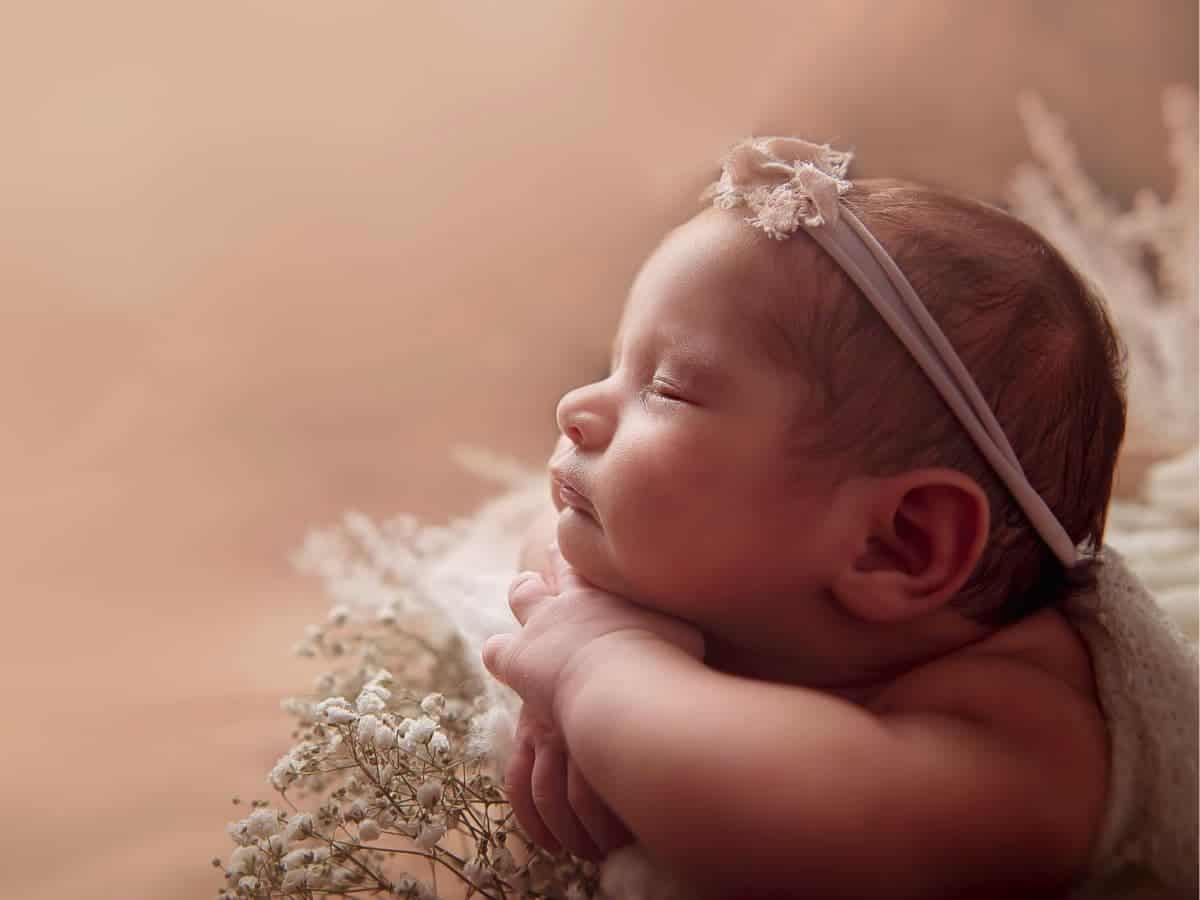
The classic newborn photos are captured from directly above the baby. While those shots are important, be sure to experiment with different angles and perspectives.
Instead of changing the position of the baby, change your position. Walk around and get creative.
You’ll capture unique images and make the most out of each pose.
When you’re trying different angles, make sure you don’t point the camera up the baby’s nose.
It’s not a flattering angle, and all you’ll be able to see are their nostrils. So, this is the one angle to avoid.
12. Include a family member
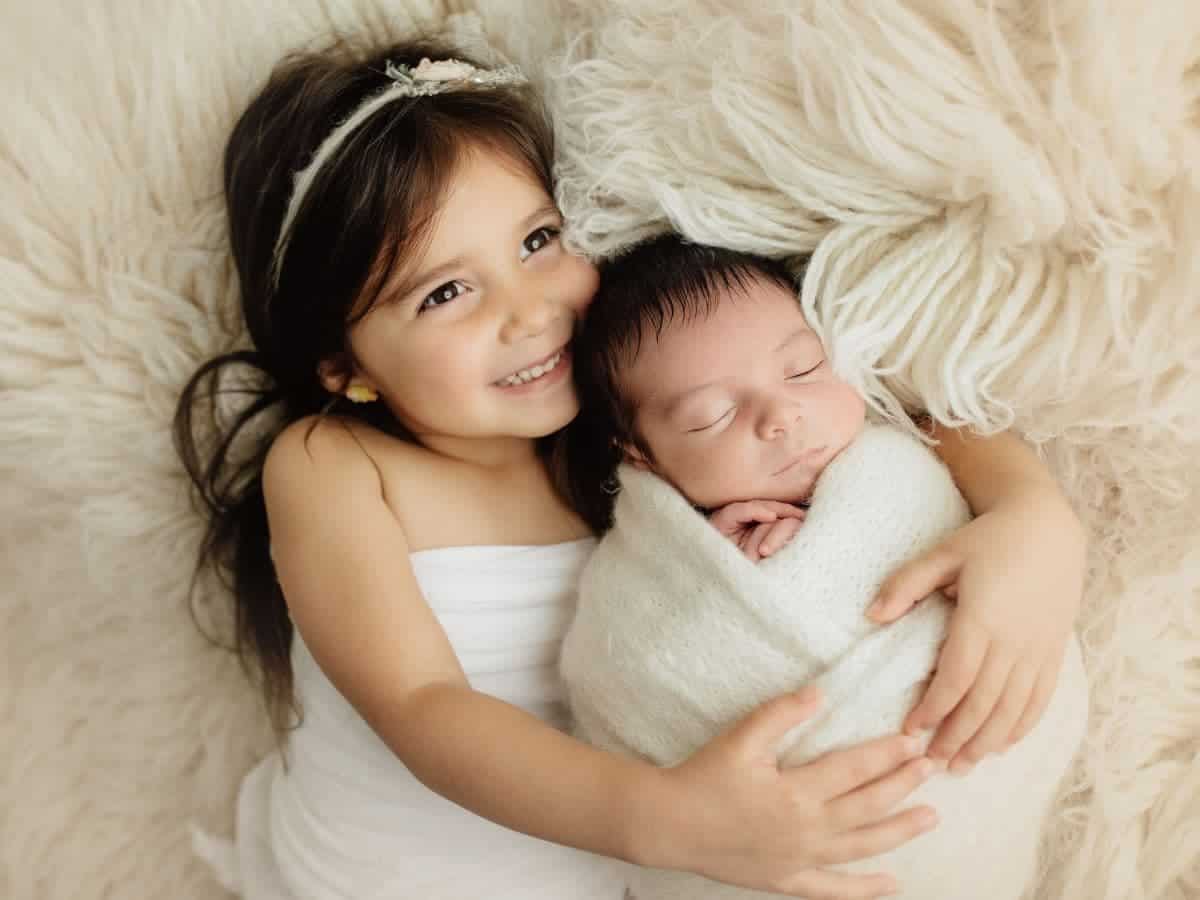
Encourage parents to get in front of the camera. If there are siblings, capture them with the baby, as well.
However, do this last because all of the moving around and noise may lead to a crying baby if it’s done early in the session.
If the family wants to join, capture the following poses:
- One parent and baby.
- Both parents and baby.
- Siblings and baby.
- Entire family and baby.
Some of the sweetest newborn photos involve the rest of the family holding or interacting with the baby.
Frequently asked questions
Does flash hurt a newborn’s eyes?
No, light flashes aren’t harmful to a newborn’s eyes. The myth of flash causing babies to go blind is false.
How much is a newborn photoshoot?
The average cost for newborn photography is $200 per hour. However, the price can vary depending on location, skill level, and demand.
Should babies wear a diaper during a newborn photoshoot?
While the baby is wrapped, keep the diaper on so they don’t pee or poop on themselves, their parents, or your props. You’ll also capture images of the newborn naked, so remove it then.
Conclusion
By learning how to capture the essence of a newborn, you’ll be an incredible newborn photographer with happy clients.
Remember, it’s all about the baby. Keep them safe, capture genuine moments, and perfect the details.
The newborn photos you take will be cherished by parents for a lifetime.
Featured image courtesy of Canva.

